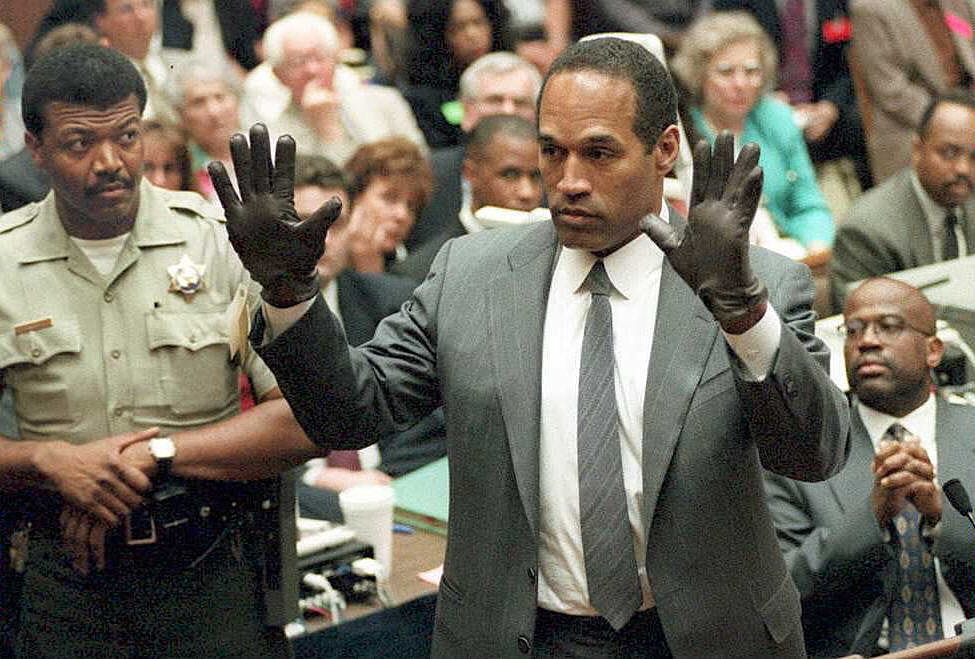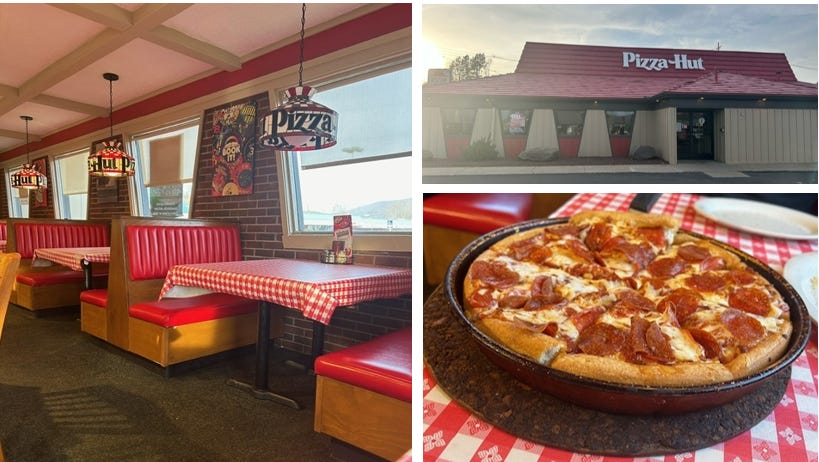|
 |
The Silver Lining in the O.J. Simpson Murder Trial
In this week’s Editor’s Corner: The football player’s criminal trial helped give birth to a generation of true crime enthusiasts who better understand signs of violence
A little over a week ago, football running back and accused murderer O.J. Simpson died at age 76. Lots of ink has been spilled since then about the legacy of the “Trial of the Century”—in which Simpson stood accused of killing his wife, Nicole Brown, and her friend, Ron Goldman, at her home in Brentwood, California, in June 1994. As many commentators have already noted, Simpson’s criminal trial and ultimate acquittal were major moments in the history of American race relations. And, for better or worse, they also heralded the arrival of the 24/7 cable news era.
Others have written of the fallout from the case in other, more fundamental ways. For instance, last week at the entertainment news site The Wrap, Kayleigh Donaldson wrote that one legacy of the O.J. trial reflects poorly on all of us—that “the treatment of horrific human abuses as entertainment speaks volumes to our morbidity and desire to make everything consumable for the masses, and it hasn’t gotten any better with time or self-awareness.”
While I don’t disagree with Donaldson’s take on our tendency to turn horror into entertainment, I have a somewhat more positive view of the long-term impact of the trial on American culture. I believe the Trial of the Century spurred the explosion of interest in true crime, from trial watching to television programs to podcasts. And the more we take in true crime tales, the more we become aware of the red flags that indicate that there might occasionally be monsters among us.
From the murders themselves to the breathless round-the-clock coverage of the trial and verdict, the O.J. Simpson case was the perfect story to help usher in today’s obsession with true crime. Of course, captivating true crime stories were nothing new in the mid-1990s—Americans were certainly familiar with the Lindbergh baby kidnapping, the Black Dahlia murder and Leopold and Loeb, among many others from decades past. But the O.J. Simpson story was the first case of its kind to captivate our country in real time; more than 95 million Americans watched the infamous white Ford Bronco chase that resulted in Simpson’s surrender to police. And while Simpson’s criminal trial was not the first to be televised, his fame made the trial appointment viewing, with memorable moments that still occupy a place in the zeitgeist (“if it doesn’t fit, you must acquit,” anyone?).
The Simpson case dovetails perfectly with the nature of America’s modern true crime obsession—which enables us to listen to and watch tales of horrific crimes literally all day and night. (Count me among the true crime fans: You’ll often find me listening to podcasts like “My Favorite Murder,” “Crime Junkie” and “True Crime Obsessed” or watching a “Forensic Files” marathon or two—or a hundred.) If you’re not a true crime fan, you might be shocked to know just how popular the genre is these days. According to a December 2022 Pew Research Center poll, about a third of U.S. podcast listeners are devotees of the true crime genre—including more than 4 in 10 women. In fact, American women are almost twice as likely as men to be regular true crime podcast listeners.
Why are so many women into true crime? While the Pew poll finds that those who listen to true crime podcasts mostly say that they do so for entertainment, there may be something more subliminal going on: We’re actually learning something.
There’s a theory that true crime stories help women feel more empowered—more confident that they would be able to handle themselves in threatening situations. Listening to or watching true crime tales exposes a person to a wide variety of crimes: serial killers, kidnappings, abusive relationships. A good chunk of true crime stories have to do with violence perpetrated against women—and so women tend to relate strongly to them.
True crime stories give listeners something of an informal “training” that can be particularly helpful these days. Online dating, while extremely common, still leaves many of us feeling less than comfortable about our safety. A different Pew poll, this one from July 2022, indicates that aggressive behavior on online dating apps is shockingly typical. More than half of the women polled between the ages of 18 and 49 who use such apps say they’ve been sent unsolicited sexually explicit messages or images. More than 4 in 10 had someone continue to contact them after they said they weren’t interested. And most frightening of all, 1 in 10 has been threatened with physical harm on a dating site or app.
It’s not surprising, then, that many of us see ourselves in true crime stories; we wonder if we may fall victim ourselves one day. Perhaps this is a big reason the O.J. Simpson case is such a cornerstone of the modern true crime era: It touches a particular nerve for fans, particularly female fans, of the genre. It is the story of the culmination of repeated intimate partner violence—with dozens of examples of physical and emotional abuse. It taps into the fears we may have about being targets ourselves.
Nicole Brown’s murder “hurled into the forefront a conversation that advocates had been having for years—that it could happen anywhere, to anyone,” writes American University professor Rachel Louise Snyder in her new book titled “No Visible Bruises: What We Don’t Know About Domestic Violence Can Kill Us.”
For those of us who lock our doors as soon as we get in the car, hold our purses close to our sides, keep a particularly focused ear out as we walk down the street alone, hearing true crime stories helps teach us actions to watch for—from people we know and people we don’t—and tools to ward off potential crimes committed against us. Yes, these lessons may be imparted under the guise of entertainment, but they are lessons nonetheless.
Even if we’re not victims of such crimes, the story of Nicole Brown’s murder is a sobering reminder that anyone could be, even someone privileged enough to be married to one of the most famous football players in America. Hearing her story—and those of too many others—gives the rest of us a sharper eye and better tools to recognize the potential danger signs. While these stories can be frightening, knowing them can ultimately make us feel safer.
Meanwhile…
Where I’ve been: I could say “when I’ve been” as well because I got to take a little trip back in time recently. Driving back from the Finger Lakes, I took a swing through northeastern Pennsylvania, to the tiny town of Tunkhannock. What took me there? If, like me, you sorely miss the halcyon days of BOOK IT!, red plastic cups and pizza served in its own hot pan, you’ll be overjoyed to know that the past is now. Tunkhannock is home to a Pizza Hut Classic: a stand-alone, sit-down Pizza Hut restaurant that pays homage to the golden age of Pizza Hut in the 1990s.
When you walk into a Pizza Hut Classic, it’s like walking through a time portal. Dine-in Pizza Huts were easy to find during my childhood, but now, at least in my area, they’re few and far between. Pizza Hut Classics not only offer the dine-in experience, but they do it in a way that looks just like a typical Hut outing might have 30-something years ago. Believe it or not, there are 79 such locations nationwide at present—for a regularly updated list of Pizza Hut Classic locations, check out The Retrologist (one of my very favorite Substacks, by the way). If you’re looking for a time warp with a side of breadsticks, now you know where to go.
And while I’m at it: Speaking of food memories from my youth, one of my favorite chains celebrated a milestone birthday this week: Wawa marked 60 years of operation this past Tuesday. Maybe it’s a little strange to talk about a convenience store chain in this way, but Wawa occupies a special place in my heart. When I was a kid, Wawa was a mainstay of my Jersey Shore visits, and fortunately, there’s now one just up the road from where I live (which I made sure to frequent this week). As an adult, I appreciate the opportunity to grab a custom hoagie even in the middle of the night. And no matter my age, I’ll always be hopelessly devoted to Wawa’s chocolate peanut butter cup ice cream that I loved as a girl.
If you live in the Mid-Atlantic region, you know the wonder of Wawa. If you don’t, my condolences. Happy 60th!
Finally: We’re also marking a special occasion at Discourse this week: the launch of Letters to the Editor! We’d love for you to share your thoughts with us on our essays or on anything. After all, Discourse is all about discourse. Periodically, we’ll publish some of our favorite letters. You can submit a letter here. We hope to hear from you soon!
Latest Stories
Robert Tracinski, “What Big Thing Are We Getting Wrong About the Future?”
Bryan Gentry, “Is Bipartisanship History?”
Christina Behe, “What Traditional Religion Offers the World”
Michael Puttré, “Iran’s Failed Attack on Israel Revealed Its Big Regional Quandary”
James Lileks, “Art That’s Just for Me”
David Masci, “In Praise of Old Bookstores”
Tracy Miller, "Should the DOJ Be Trying To Take a Bite out of Apple?"
Rabbi Seth Adelson, “‘Dayenu’ in Reverse”
From the Archives
Michael J. Ard and Michael Puttré, “The Gaza War Reaffirms America’s Central Role in the Middle East”
David Masci, “The Dangerous Allure of the Silver Bullet”
Robert Tracinski, “Antitrust Policy Is Becoming Big Government’s ‘Room of Requirement’”
You’re currently a free subscriber to Discourse .

